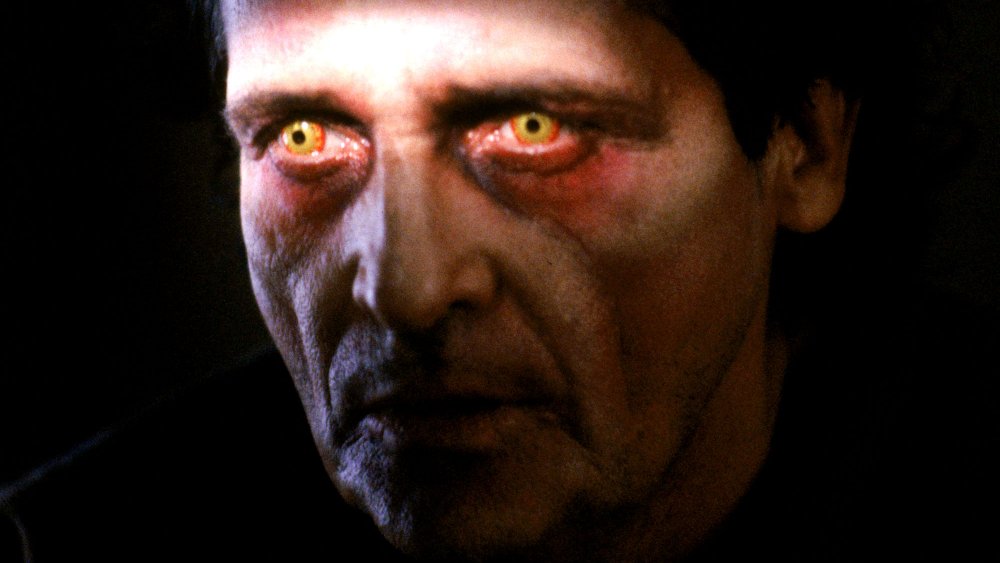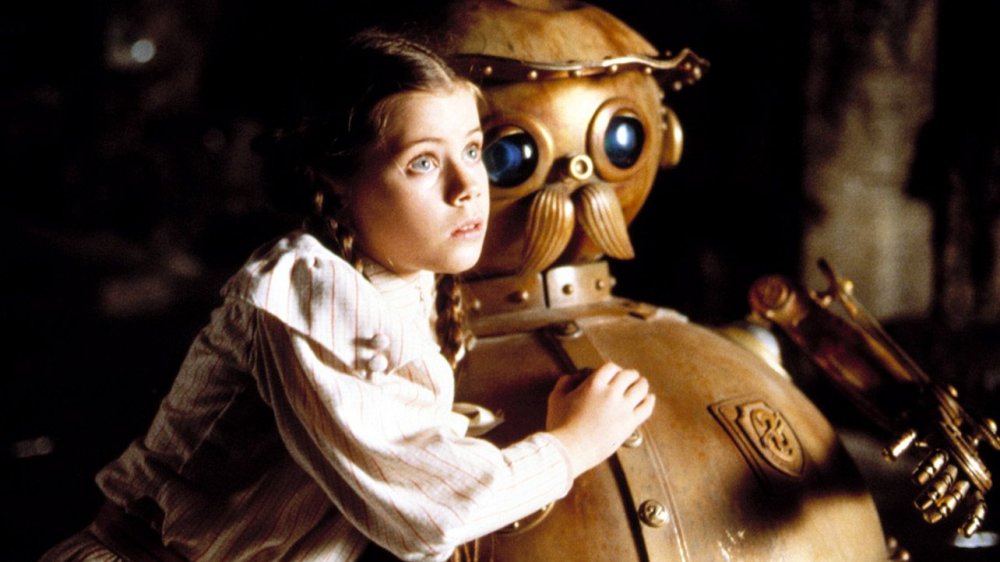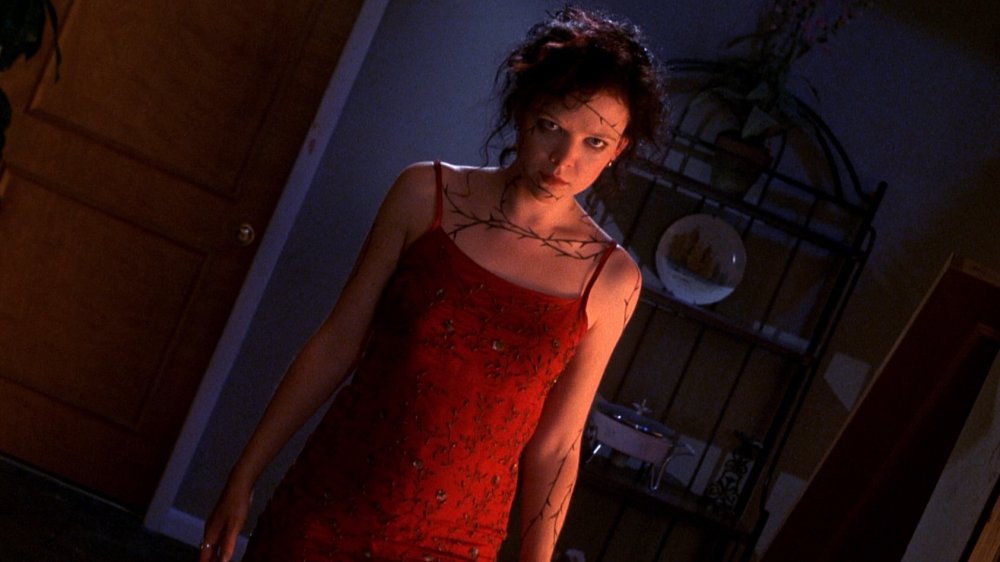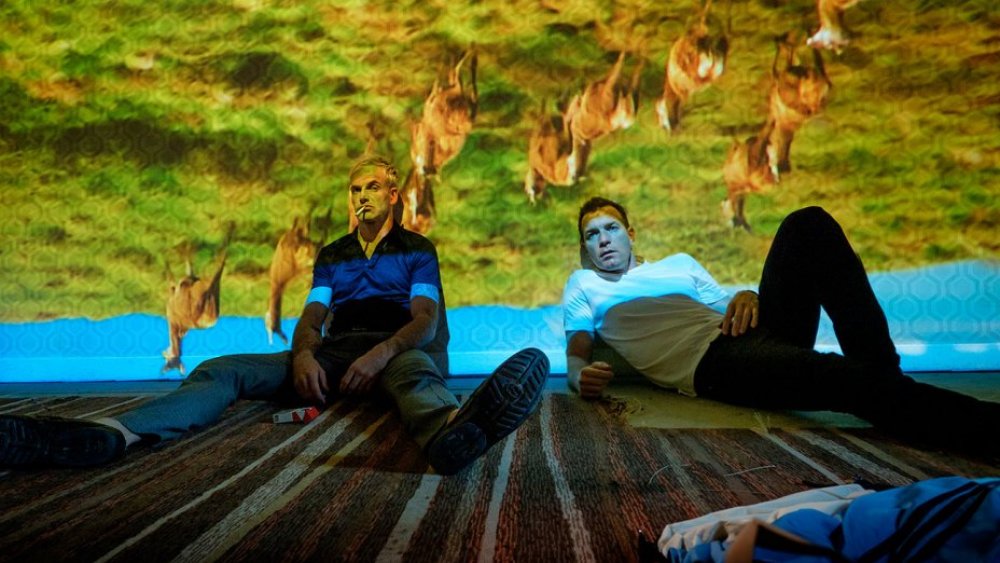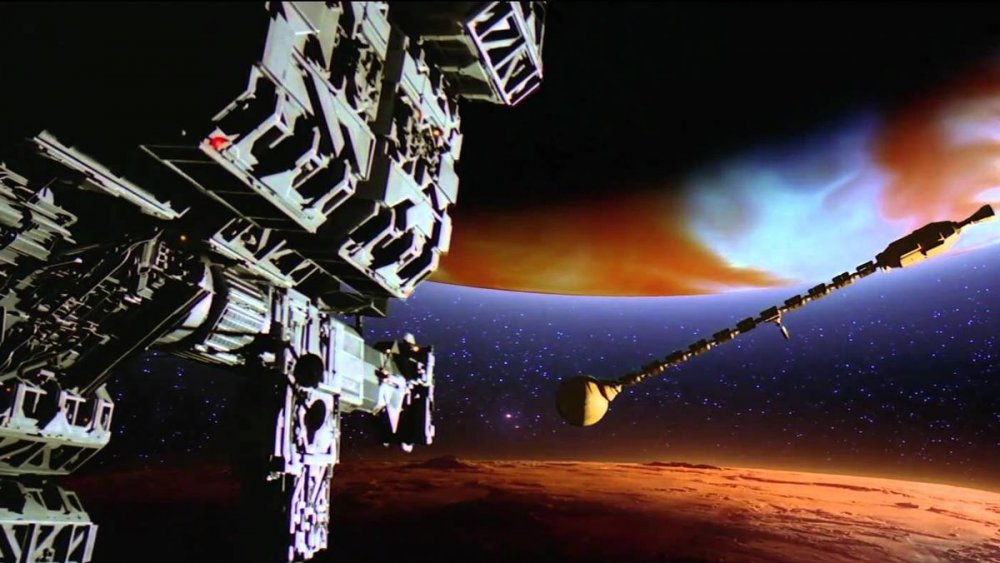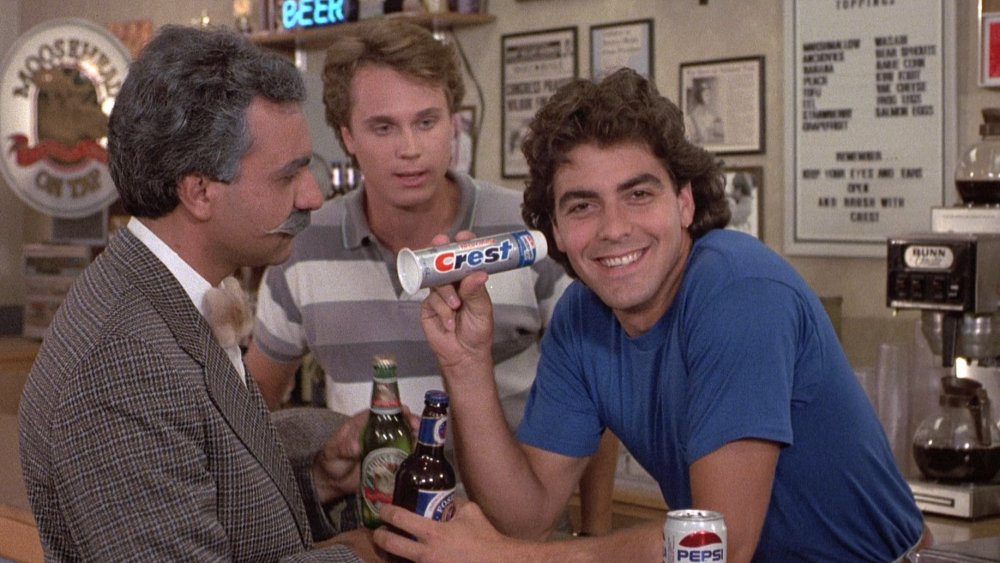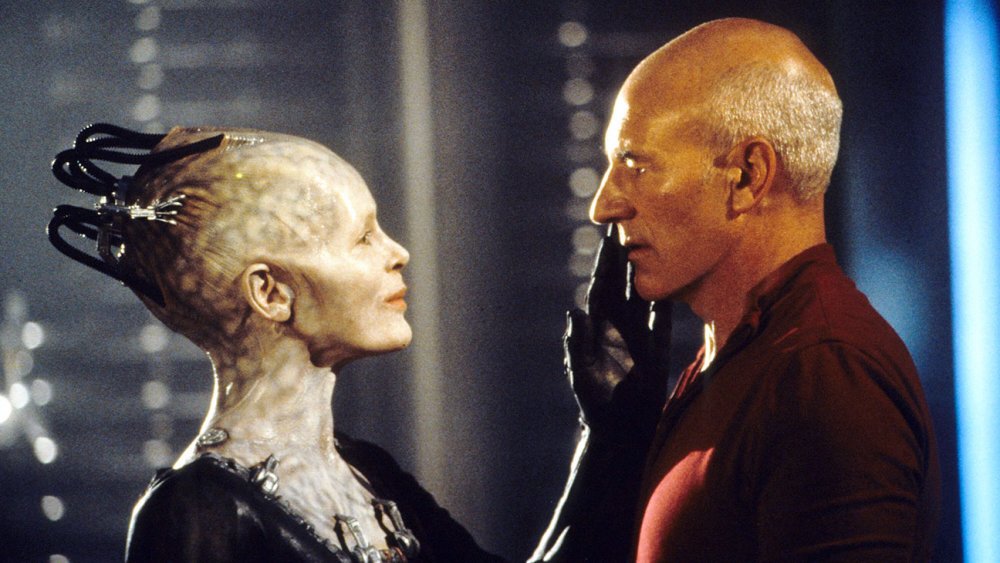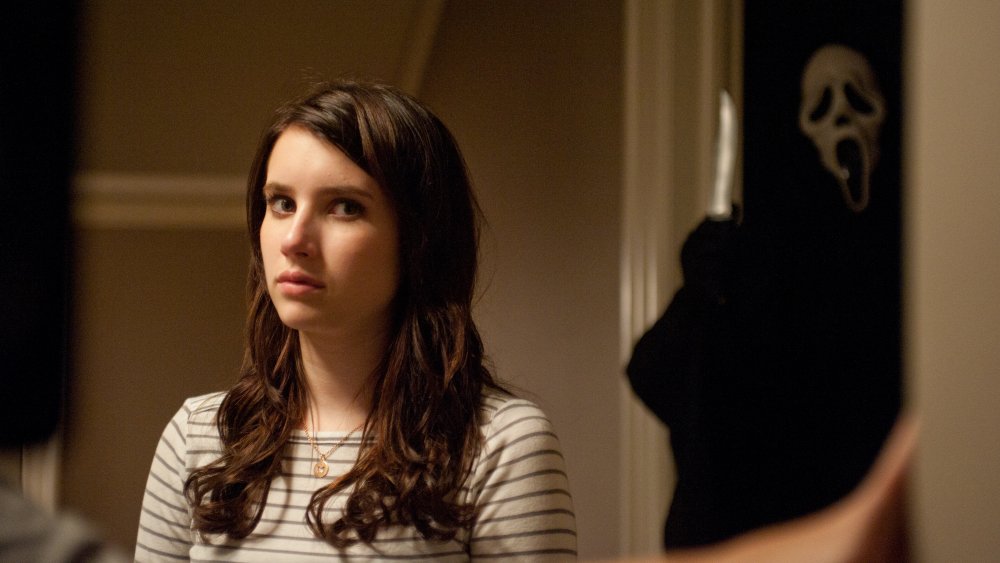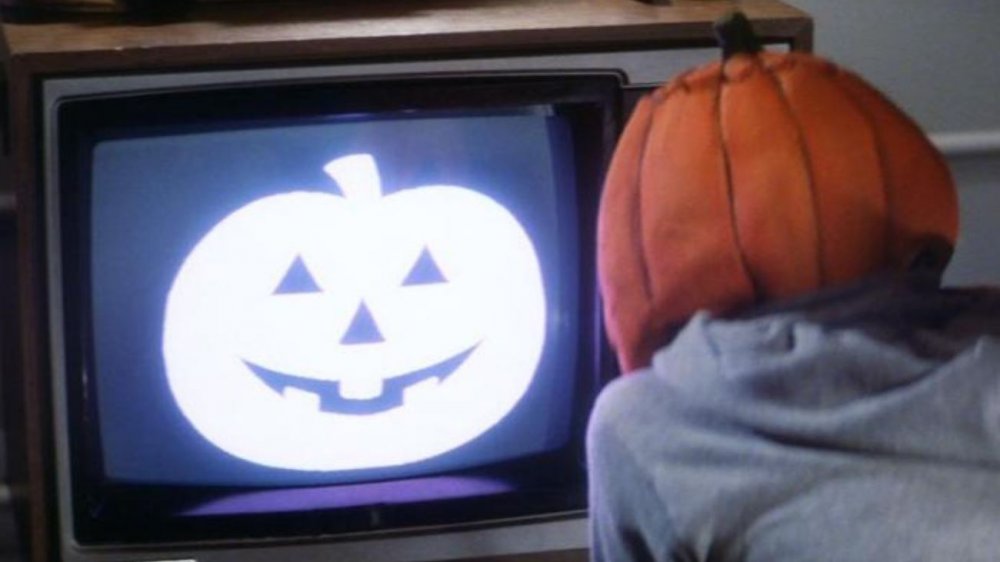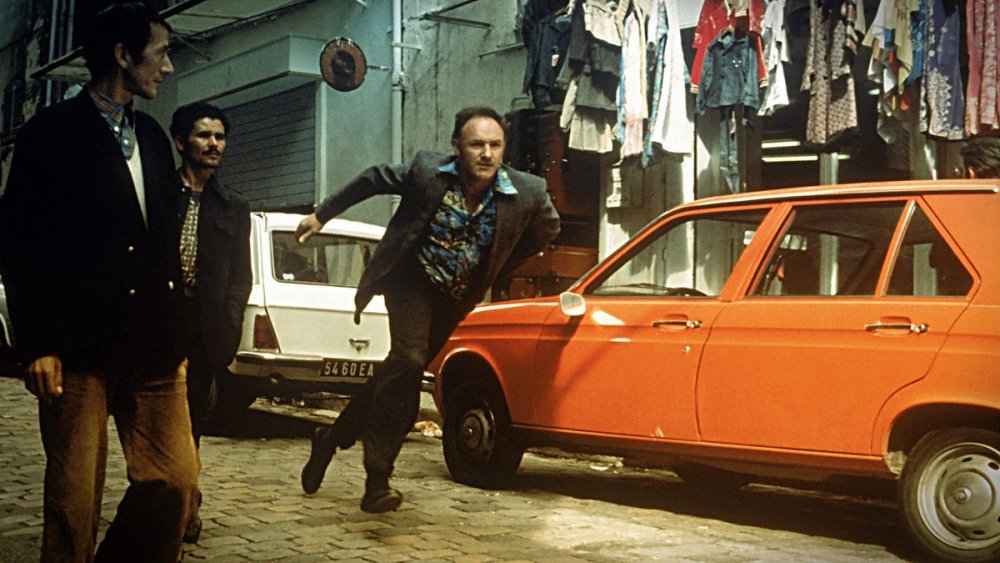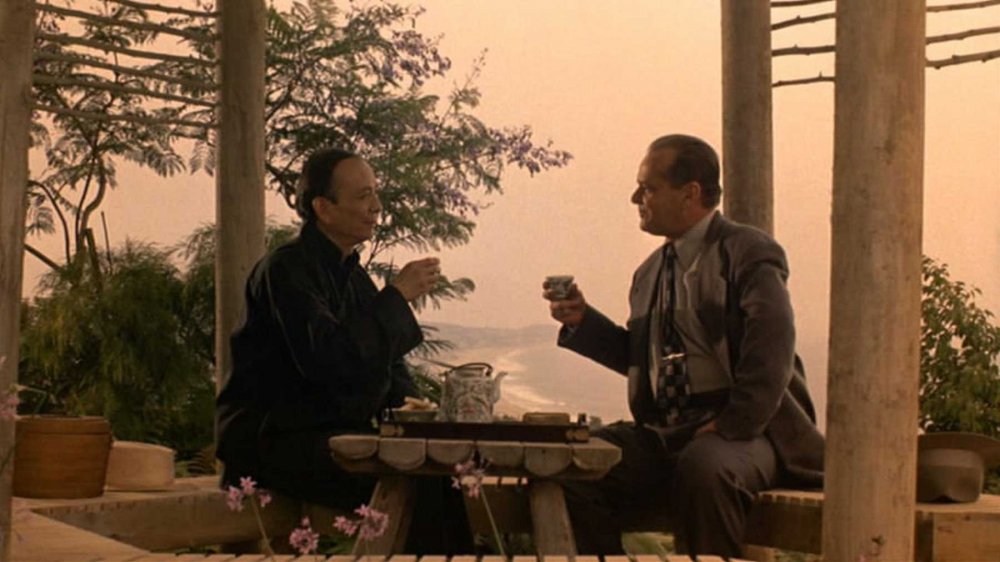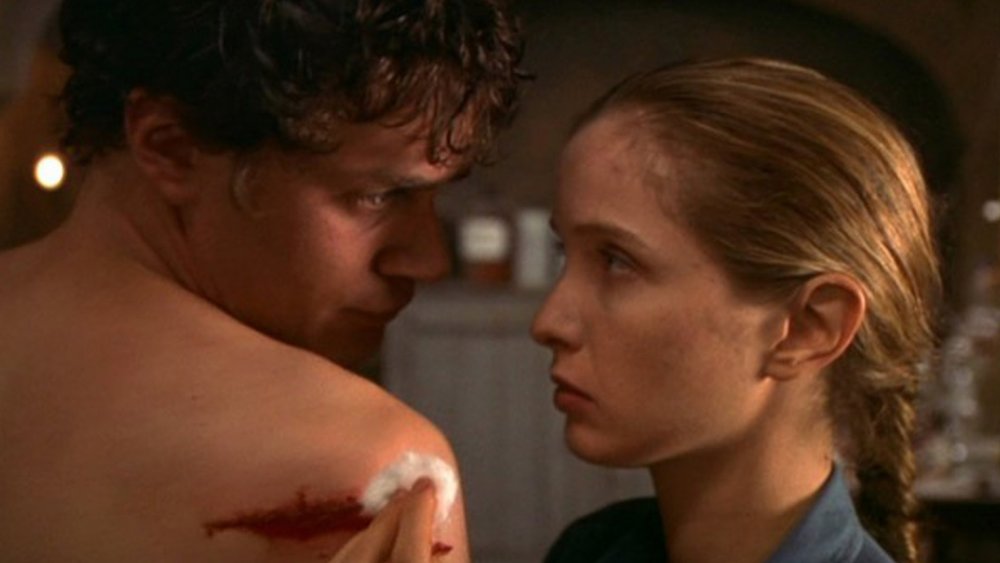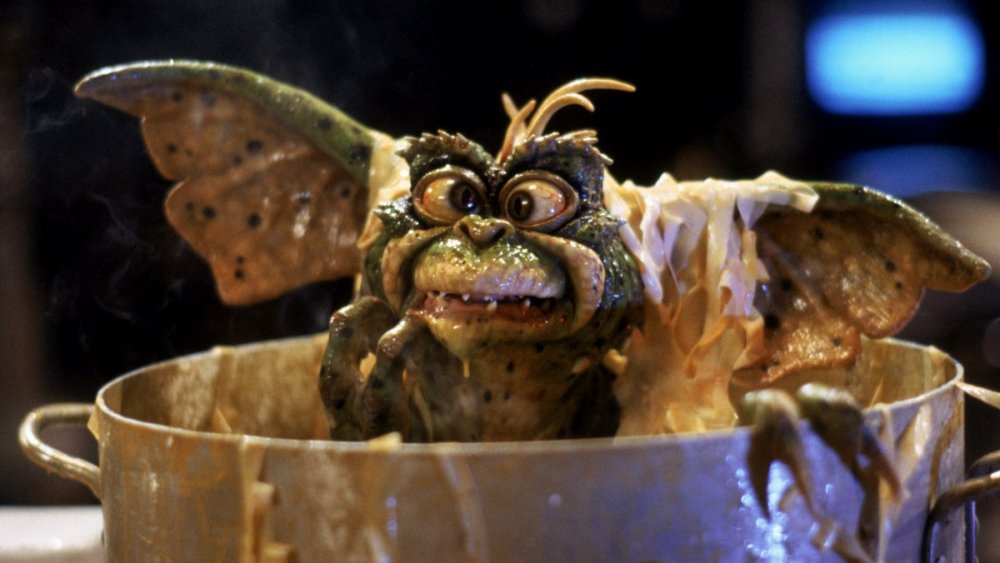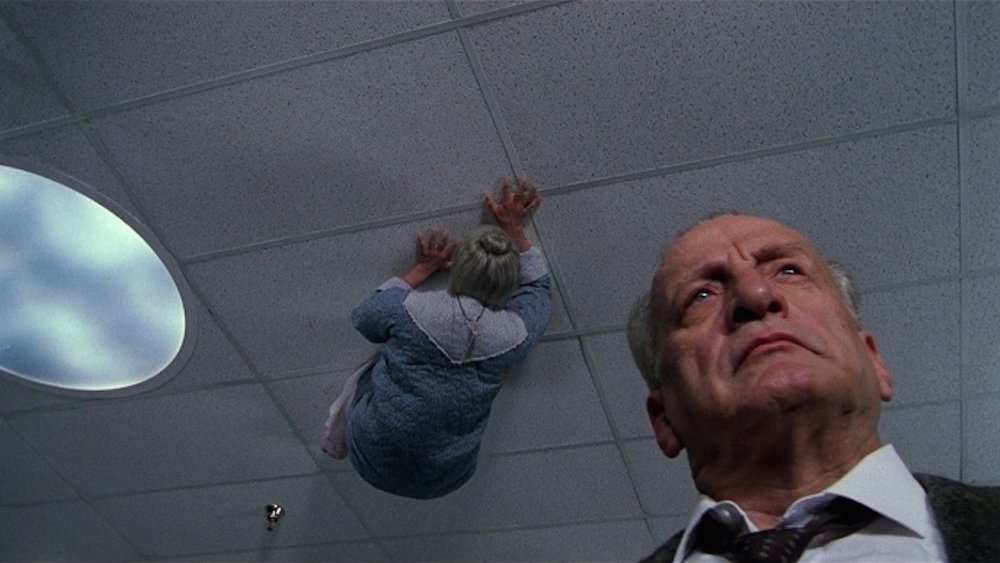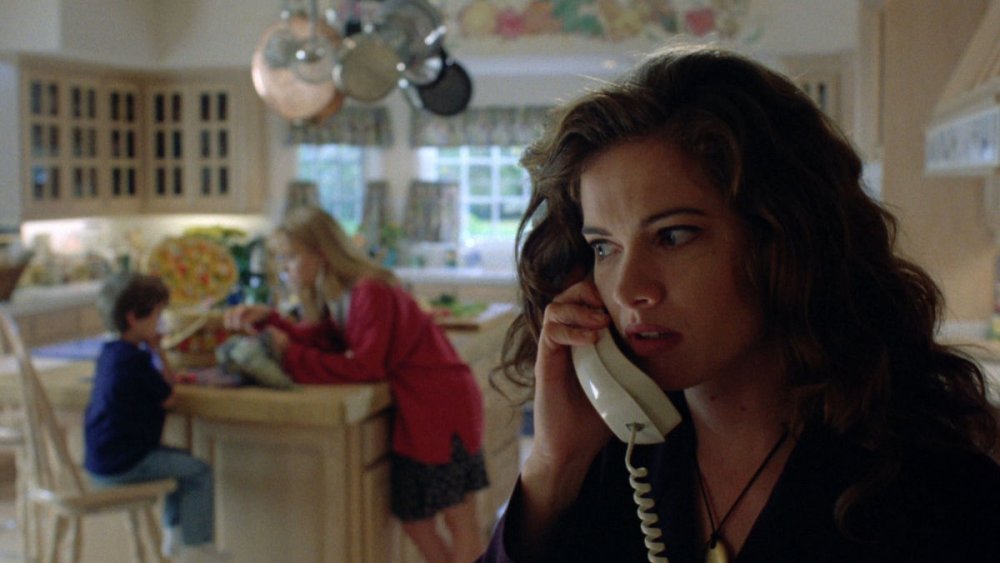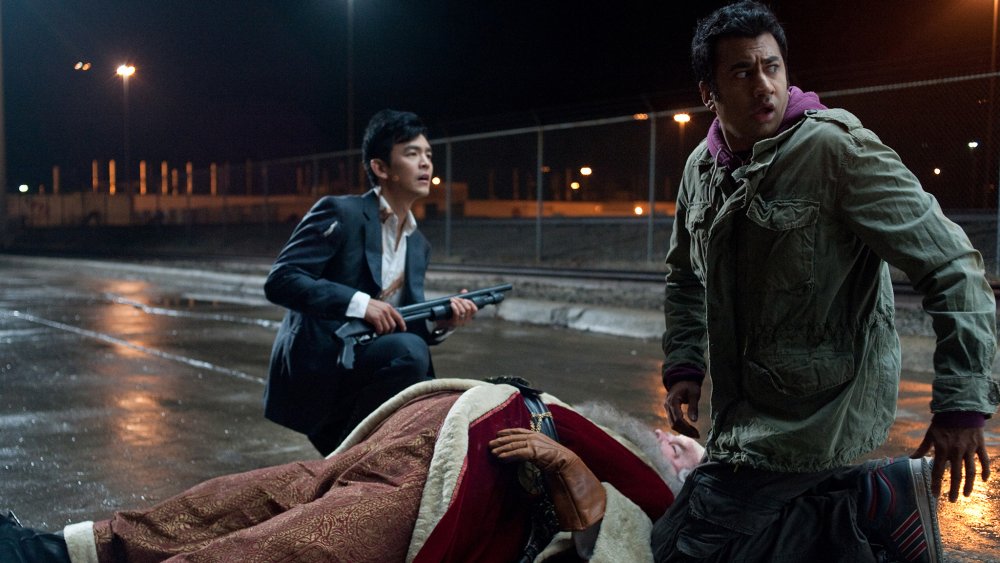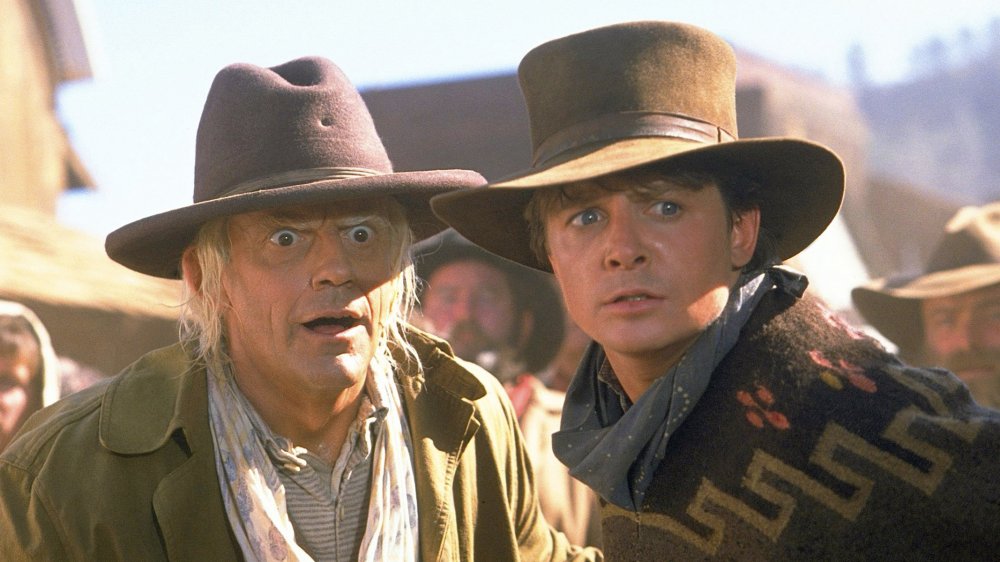The Best Movie Sequels You've Never Watched
Some films are built to be franchises. The Skywalker saga couldn't have ended before Luke knew who his father was, Harry Potter wouldn't have been able to defeat Voldemort by the end of The Sorcerer's Stone, and Indiana Jones could never have stopped his adventuring before fans met his dad and learned how he got his nickname. Without their sequels, these and other stories would simply feel incomplete.
There are, of course, many films that exist wholly self-contained — films that neither need to have their universes expanded nor their protagonist's story extended. On occasion, these sequels get made anyway, and often fans are left scratching their heads, wondering why exactly we had to revisit Speed on a boat. Not all sequels are terrible, obviously. Some second, third, or eighth offerings do, in fact, add to their respective franchises — even if all they add is a bit of mindless entertainment.
For whatever reason, these sequels did get made. They may not be as necessary to a franchise as others, but they're definitely worth watching. And if you haven't heard of them, you aren't alone. These are the best movie sequels you've never watched.
Return to Oz (The Wizard of Oz)
Few films have had an impact as great as 1939's The Wizard of Oz. Adapted from L. Frank Baum's novel The Wonderful Wizard of Oz, not only was the film representative of the height of technology (photographed in Technicolor!), but it confirmed Judy Garland as a bona fide star. The Wizard of Oz was nominated for six Academy Awards, including Best Picture, and according to the Library of Congress, "it has been seen by more viewers than any other movie." Critically beloved, it's a true American classic that continues to have an impact on audiences today.
Forty-five years later, Return to Oz finds young Dorothy Gale (Fairuza Balk) on a new adventure back to Oz, only this trip is much, much darker. Gone are the friendly residents of Munchkinland and the familiar faces that belonged to Dorothy's Yellow Brick Road companions. Emerald City lies in ruins, overrun by the appropriately named Wheelers, creatures with wheels for hands and feet. To say that Return to Oz is a strange second serving would be an understatement. The movie has little to do with its predecessor outside of its central, decidedly less musical, heroine. It came in seventh at the box office its opening weekend, bringing in less than $3 million on a $28 million budget. Critics were split, with many noting its darker tone as either its most positive or most negative attribute.
Still, it's attracted a cult following in the years since its release. And if a princess with a collection of heads is more your speed than a wicked witch with flying monkeys, Return to Oz is certainly a worthwhile endeavor.
The Rage: Carrie 2 (Carrie)
Brian De Palma's 1976 horror classic Carrie marked the first of many Stephen King adaptations. The story of teenage outcast Carrie White (Sissy Spacek), who discovers she has telekinetic abilities to a murderous degree, Carrie is generally regarded as one of, if not the best of King's adaptations, and it's considered to be one of the greatest horror films ever made. It's also gone on to inspire two remakes and a sequel, decades after its initial release.
While a remake might be expected (there are only so many horror stories for Hollywood to tell, apparently) a sequel to Carrie was something that would require a little more finesse. After all, the original film ends with the teenager's death — it doesn't get much more final than that. Unless, of course, Carrie were to have a secret half-sister with the exact same untapped telekinetic potential, which is the general premise for 1999's The Rage: Carrie 2. Starring Emily Bergl as said sibling Rachel Lang, the film follows the same general beats as its predecessor — members of the in crowd play the less popular kid for laughs; she loses control of her abilities; everything — and everyone — goes to hell.
The Rage couldn't impress critics or audiences, and its lasting legacy is as a disposable relic of '90s era teen horror. But it's an entertaining watch, if for no other reason than the fact that it made an attempt to expand on the original's lore, as opposed to just rehashing it altogether. And Bergl is solid as Rachel, who turns out to be a more sympathetic character on account of having at least some measure of social ability.
T2 Trainspotting (Trainspotting)
1996's Trainspotting was an instant hit and a true encapsulation of '90s indie cinema. The portrait of addiction and poverty in suburban Edinburgh, based on Irvine Welsh's same-named novel, centers on a group of heroin-addicted friends led by Mark Renton (Ewan McGregor in a breakout role) as they struggle with sobriety and everyday existence. It spoke to an entire generation of lost souls, and its unflinching portrayal of abuse was highlighted by a dark humor and an incredible soundtrack. In 1999, the British Film Institute named Trainspotting the tenth best British film of the century.
Two decades later, the original cast reunited with director Danny Boyle for T2 Trainspotting, which sees Renton return to his old neighborhood as his marriage falls apart, he suffers a heart attack, and the impending doom of middle age looms around the corner. This go-around, Renton and his pals find themselves caught up in a legal mess revolving around the operation of an illegal brothel. Although T2 performed well internationally, it had a quiet opening in America, bringing in less than $200,000 its first weekend. Still, the film did well with critics, who praised its "emotionally resonant" portrayal of a group of people struggling to move forward from their past mistakes. It may not be as innovative as its predecessor, but it still speaks to those who grew up with the original and may not yet have completely found their way.
2010: The Year We Make Contact (2001: A Space Odyssey)
In the realm of science fiction, there is perhaps no film more influential than Stanley Kubrick's 1968 masterpiece 2001: A Space Odyssey. Set largely aboard the Jupiter-bound space craft Discovery One, 2001 tells the story of a mysterious monolith, the group of astronauts sent to investigate it, and the onboard computer system that ultimately turns against them. The film was nominated for four Academy Awards, winning one for Best Special Visual Effects, and is today regarded as one of the most culturally significant films ever made. And it remains a topic of discussion for film fans and scholars alike.
Peter Hyams' 1984 followup 2010: The Year We Make Contact was never going to be able to reach the bar that 2001 had set, but it definitely tries. Nine years after the Discovery One incident, a joint US/Soviet mission is sent out to uncover the truth. 2010 further explores the presence and meaning of the monolith, although, like 2001, the audience is left with more questions than answers about its true purpose.
2010 did fairly well at the box office, opening in second place with a $7 million haul. Critic response was overall favorable, but the biggest problem with 2010 isn't that it's not a good sci-fi movie — it really is. It's that it isn't a Stanley Kubrick sci-fi movie. Taken on its own merits, 2010 turns out to be one of the more enjoyable space-set films of the '80s.
Return of the Killer Tomatoes! (Attack of the Killer Tomatoes)
There's a benefit to following a film that's never been considered a classic or a masterpiece, one that hasn't set any box office or awards records. When expectations are low (or nonexistent), you can really do anything you want. 1978's Attack of the Killer Tomatoes was no critical darling — the film, about a country besieged by mutated carnivorous tomatoes and the team of specialists tasked with saving the day, has received mostly negative reviews over the years. In spite of this, Attack of the Killer Tomatoes is a bona fide cult classic that's launched an entire franchise of sequels, novels, video games, and kids' cartoons.
The approach to its first sequel, 1988's Return of the Killer Tomatoes!, was of the "throw everything at the wall and see what sticks" variety. A decade after the Great Tomato War, tomatoes have been outlawed. Everything seems to be going well until Professor Mortimer Gangreen (John Astin), the never-spoken-of true villain behind the first film's attack, figures out a way to reverse-engineer the music that brought about his initial defeat to his favor, transforming tomatoes into human beings. Our heroes in this installment are pizza boy Chad (Anthony Starke), tomato-turned-human Tara (Karen Mistal), Chad's best friend Matt (a baby-faced George Clooney), and a poorly mutated tomato named FT.
Like its predecessor, Return of the Killer Tomatoes! is completely ridiculous, but where Attack of the Killer Tomatoes is just a parody of B-movies, Return of the Killer Tomatoes! is a parody of a parody, which somehow makes it a better film. From fourth wall breaking to unnecessary product placement and fuzzy mutated pet adventures, it's beyond anything in its genre — which is a good thing.
Star Trek: First Contact (Star Trek)
The Star Trek franchise is vast and long-running, one that follows multiple crews and which has lasted over half a century. Since 1979, 13 Star Trek films have been made, although only three crews have made it to the big screen (two, if we're counting the J.J. Abrams alternate timeline one as just a variation of the original). The film series has had its fair share of ups and downs — some have found both critical and commercial success, while others have failed miserably to live up to expectation. One would assume that an eighth film in any franchise would have a difficult time standing up against some of its predecessors, but 1996's Star Trek: First Contact took everyone by surprise.
The followup to 1994's Generations, which effectively passed the motion picture torch from Kirk's Enterprise to Picard's (and which was a failure with both critics and fans), First Contact is the first of the Star Trek films to focus solely on the Next Generation crew. It also revisits one of the greatest TNG storylines of all time: the battle with the Borg. Years after Picard's assimilation into and escape from the Collective, a new Borg threat sends the crew of the Enterprise back in time to save Earth from mass assimilation.
First Contact has been hailed as one of the best films in the entire series, with critics praising both the film's performances and its direction, which comes courtesy of Number One himself, Jonathan Frakes. It's a truly interesting, updated take on the story, and having a big-screen budget to tell it definitely works to the film's benefit.
Scream 4 (Scream)
By 2011, the world had grown weary of Sidney Prescott (Neve Campbell) and her seemingly never-ending parade of obsessed mask-wearing murderous psychos. Scream 3, which hit theaters in 2000, was panned by critics, who claimed the film "[fell] back on the same old horror formulas and cliches" the franchise had once destroyed. Still, the film managed to nearly make up its entire cost its first weekend at the box office, so the studio system trudged forward, greenlighting a fourth installment in the franchise. Hopes for greatness weren't exactly high.
But Scream 4 (or SCRE4M, if you're a sucker for numbers that sort of look like letters) turned out to be more than just a passable sequel. Returning to its roots, the film features two Ghostface killers working in tandem: Jill Roberts (Emma Roberts), Sidney's jealous, fame-hungry cousin, and Charlie Walker (Rory Culkin), Jill's secret boyfriend and horror movie aficionado. The rules, however, have changed — in this Scream installment, we find the killers are adhering to movie remake rules. It's a small change from the franchise's original formula, but it's enough to make this particular sequel stand out. Having Roberts and Culkin inject some much-needed fresh blood into the franchise is an added bonus — their performances are what ultimately makes the movie, and it's fun to check out Roberts play with villainy prior to her memorable turn on AHS: Coven.
Halloween III: Season of the Witch (Halloween)
When it hit theaters in 1978, no one suspected that John Carpenter's Halloween, a low-budget slasher about a boogeyman in a spray-painted Captain Kirk mask and mechanic's coveralls who stalks a babysitter and kills all her friends along the way, would become the phenomenon it did. The film set the stage for what much of horror would go on to look like in the following years, and it's since become not only a classic, but required viewing for anyone even remotely interested in the genre. Michael Myers is an icon, and it's hard to imagine the world of Halloween movies without him.
But it wasn't always meant to be this way. Carpenter's intention was to have the Michael Myers story end with the first film — after its success, Carpenter "had to" write the sequel, but, as he explained to The Hollywood Reporter in 2015, "I thought that we were done with telling stories about Michael Myers and the guy in the mask. I thought there's not much more to say. So we thought we'd come up with a new story every year. We could call it Halloween, but it didn't have to do anything with Michael Myers."
And so in 1982, we got Halloween III: Season of the Witch, a film that swaps out Michael Myers for a piece of Stonehenge and some cursed Halloween masks, and which tells the story of one man's plan to sacrifice a bunch of children in order to bring about a new age of witchcraft. Halloween III may not have been a hit with critics who'd expected another Michael Myers installment, but it's since developed its own fanbase — one that doesn't need a masked maniac at Halloween.
French Connection II (The French Connection)
Based on a true story, William Friedkin's 1971 classic thriller The French Connection centers on the pursuit of French heroin smuggler Alain Charnier (Fernando Rey) by New York police detectives Jimmy Doyle (Gene Hackman) and Buddy Russo (Roy Scheider). The film is widely regarded as one of the greatest in American cinematic history — it was nominated for eight Academy Awards and took home five, including Best Picture, Best Director, and Best Actor. Hackman and Scheider have both been praised for their performances, while The French Connection is considered Friedkin's best. It also has one of the most incredible car chases ever put to film.
Four years later, the story picks up with French Connection II, a completely fictional sequel that sees Doyle head to France in his continued pursuit of Charnier. Alone in a foreign land, Doyle struggles to settle in and is eventually kidnapped and subjected to interrogation by Charnier's men, who also get him addicted to heroin. There are no great car chases, but French Connection II still manages to be an interesting and entertaining followup. Hackman delivers another stellar performance, adding depth to Doyle in a way that isn't always seen in typical action movies. Critically, French Connection II is something of a standout among sequels — it doesn't quite have the reputation that its predecessor does, but it's a fine film all its own.
The Two Jakes (Chinatown)
It'd be difficult to discuss classic film noir without bringing up 1974's Chinatown. Starring Jack Nicholson as private investigator J.J. "Jake" Gittes, the film isn't just a story about murder and the corruption within the Los Angeles Department of Water and Power in the '30s — it's a deep and dark journey into death, deception, and relationships. It was nominated for 11 Academy Awards, receiving a nod in every major category and a win for Best Original Screenplay, and the American Film Institute recognizes it in six separate categories. It brought a whole new meaning to the idea of family, thanks to its shocking finale.
So where does a P.I. go once he's solved the most sensational crime of 1937? He keeps doing what he does best, and in 1990's The Two Jakes, which picks up 11 years after the events of Chinatown, Gittes is once again called on to prove whodunit in a seedy murder — or who-didn't-dunit, as this case may be. Under suspicion for the death of a man that he had under surveillance, Gittes sets out to prove his own innocence and gets tangled up in past loves along the way.
Reviews for The Two Jakes are generally positive, although critics split over Nicholson's reprisal of one of his most famous characters. It may not quite be the Los Angeles of Chinatown, but in the words of Jake Gittes, "It never goes away."
An American Werewolf in Paris (An American Werewolf in London)
John Landis created something truly special with 1981's An American Werewolf in London. Following a werewolf attack in the Yorkshire moors that leaves him injured and his best friend dead, David Kessler (David Naughton) sets off down a road toward werewolf transformation, one that includes visits from his now-decaying friend Jack (Griffin Dunne) and his increasing number of victims. Ultimately, David dies, Jack finds peace, and life goes on. An American Werewolf in London captures horror comedy at its finest, and it features a transformation sequence that won the first ever Academy Award for Best Makeup.
Fifteen years later, the story picks up (sort of) with An American Werewolf in Paris, which centers on Andy McDermott (Tom Everett Scott), the mysterious Serafine (Julie Delpy), and a Parisian werewolf society that traps and kills tourists in a nightclub called Club de la Lune. What happens next is familiar territory: Andy survives an attack and gets to hang with his dead best friends and first victim. The twist comes from the film's connection to its predecessor — Serafine is actually David's daughter, from a tryst with the nurse who had given him a place to stay after his release from the hospital, and she has a cure. It all works out in the end, and An American Werewolf in Paris ends on a decidedly less grim note.
The film's reception was less optimistic, however, with critics panning the movie's heavy reliance on computer animation for its monsters. But beyond the effects — and they are awful — the film is a fun (albeit mindless) popcorn flick. Scott and Delpy are an enjoyable pair, even if their blurry wolf counterparts are not.
Gremlins 2: The New Batch (Gremlins)
There's no denying the overwhelming appeal of 1984's horror comedy Gremlins. Centered on a family who unwittingly unleashes a horde of mischievous monsters upon the small town of Kingston Falls, Gremlins combines holiday fantasy with outright terror, taking on consumer culture with a little water and some sunlight. It proved to be a massive hit, raking in over $12 million its opening weekend.
A few years later, the cast and crew reunited, and, hoping to strike gold twice, Gremlins 2: The New Batch hit theaters in June of 1990. While the basic premise of the original story is here, for the most part, Gremlins 2 is a movie all its own. While both films are horror comedies, Gremlins 2 took the story in a more lighthearted direction than its predecessor, relying more on parody for laughs. It's over the top in its comedic excess — Joe Dante, who directed both films, told Bloody Disgusting in 2015 that he never wanted to make a sequel but was given "three times the money" along with the freedom to do whatever he wanted. "So I made Gremlins 2," he explained, "which was essentially about how there didn't need to be a sequel to Gremlins."
Regardless of how it came to be, Gremlins 2 is one of those sequels that fans hold as near and dear to their hearts as the original, even if it is just making fun of itself the entire time.
The Exorcist III (The Exorcist)
Demonic possession has served as Hollywood horror fodder for decades. The most famous of these films is, of course, 1973's The Exorcist, William Friedkin's take on William Peter Blatty's 1971 novel that centers on Regan (Linda Blair), a young girl who falls under the control of a demon named Pazuzu, and on Father Damien Karras (Jason Miller), a priest struggling with his faith who's tasked with saving her. The film wound up being a hit at the box office, raking in nearly $200 million domestically, and it became the first horror movie to be nominated for Best Picture at the Academy Awards.
Obviously, there was a market for Pazuzu, and in 1977, he and Regan made a comeback with The Exorcist II: The Heretic. That film, which attempted to expand upon the demonic lore of the first with psychic healers and doppelgängers, was a failure both critically and financially. But in 1990, Blatty returned to the franchise, serving as both writer and director of The Exorcist III. Ignoring the events of The Heretic, The Exorcist III follows William Kinderman (George C. Scott), a police lieutenant investigating a series of murders that look like those committed by a now-dead serial killer. Miller reprises his role as Karras, who, after having survived the Regan exorcism, is now being used as a killer conduit.
While not without its faults, The Exorcist III is a vast improvement on its predecessor. It's thoughtful, and both Scott and Miller are exceptional. In an unfortunate turn of events, however, Blatty was forced to add an exorcism sequence to the end, forever marring a film that would have otherwise been a haunting and cerebral followup worthy of his original.
Wes Craven's New Nightmare (A Nightmare on Elm Street)
When Wes Craven's A Nightmare on Elm Street hit theaters in 1984, it was like nothing horror fans had ever seen before — a killer targeting teens in their dreams, a community of adults behind a massive coverup, and a villain so terrifying that he kept both the film's characters and its audience awake at night. Robert Englund built his entire career around Freddy Krueger, a role he credits for making him "an international actor overnight," and since first donning that knifed glove, he's gone on to play the killer seven more times. As the franchise went on, however, it became a parody of itself, and Freddy was relegated to little more than a caricature.
But Craven always was the kind of writer/director who thrived on turning things on their head, and, like he did with the horror genre in 1984, he flipped the narrative of his original masterpiece a decade later with Wes Craven's New Nightmare. Reuniting original cast members as real-life versions of themselves who wind up terrorized by a demonic force posing as Freddy Krueger, New Nightmare has almost nothing to do with the original Nightmare on Elm Street narrative. Instead, it examines the horror industry itself, as well as the legacy of Craven's original film and the franchise it created. It's meta at its very best, and it in fact serves as a sort of warm-up to Craven's 1996 hit Scream.
The approach proved successful with both critics and audiences. Wes Craven's New Nightmare is considered one of the best in the entire series, second only to the original.
A Very Harold & Kumar Christmas (Harold & Kumar Go to White Castle)
Comedies in the early aughts were often over the top, raunchy, and ridiculous. Stoner comedies, which were exceptionally popular at the time, were all of these things... but with an added layer of unlikely drug-induced hijinks. Enter Harold & Kumar Go to White Castle, a 2004 film that follows the titular characters (John Cho and Kal Penn, respectively) on a pot-fueled quest to satiate their late night munchies. The pair are thrust into a series of misadventures but ultimately find their way, thanks in part to Neil Patrick Harris. While not an Oscar contender by any means, Harold & Kumar Go to White Castle received generally favorable reviews upon its release, mostly on account of its likable leads and edgy humor.
Although its 2008 followup, Harold & Kumar Escape From Guantanamo Bay, was decidedly less successful, Cho and Penn reunited once more in 2011 for A Very Harold & Kumar Christmas, a 3D holiday film that revisits the duo two years after having gone their separate ways. Like the films that came before it, A Very Hard & Kumar Christmas tends toward lowbrow humor, but not at all to the extent that Guantanamo Bay did. Instead, Christmas leans into the holiday spirit, tempering its crass comedy with genuine feel-good moments. That isn't to say that it will ever become a holiday classic, but it's an entertaining final installment in a franchise that understood when it was time to say goodbye.
Back to the Future Part III (Back to the Future)
There's much to be said for Robert Zemeckis' 1985 time travel comedy Back to the Future. Telling the story of high schooler Marty McFly (Michael J. Fox), who, with the help of his best friend and inventor Doc Brown (Christopher Lloyd), travels back in time to save his parents' marriage and his future existence, Back to the Future is, to this day, one of the most beloved and original movies ever made. It was both a critical and financial success, going on to become the highest grossing film of 1985. It was nominated for four Academy Awards, including Best Screenplay, and The New York Times lists it as one of the Best 1000 Movies Ever Made. There are two sequels, and while 1989's Back to the Future Part II is the one that's remembered most by fans (who could forget that Jaws 19 moment?), it's Back to the Future Part III that's the forgotten gem of the franchise.
After learning of Doc's death in 1885 at the hands of Biff Tannen's great-grandfather Mad Dog (both played by Thomas F. Wilson), Marty travels back to the Old West in order to save him. Part III has a much simpler narrative than Part II, but it's helped along with a fun and interesting setting, a locomotive time machine, and a love interest for Doc that, quite frankly, was well deserved. The film was also a bigger hit with critics than the prior installment, with the general consensus being that its paring down of plot elements worked in its favor. It may not be the cultural powerhouse that the original is, but it definitely keeps from falling into the franchise trap of unworthy sequels.
